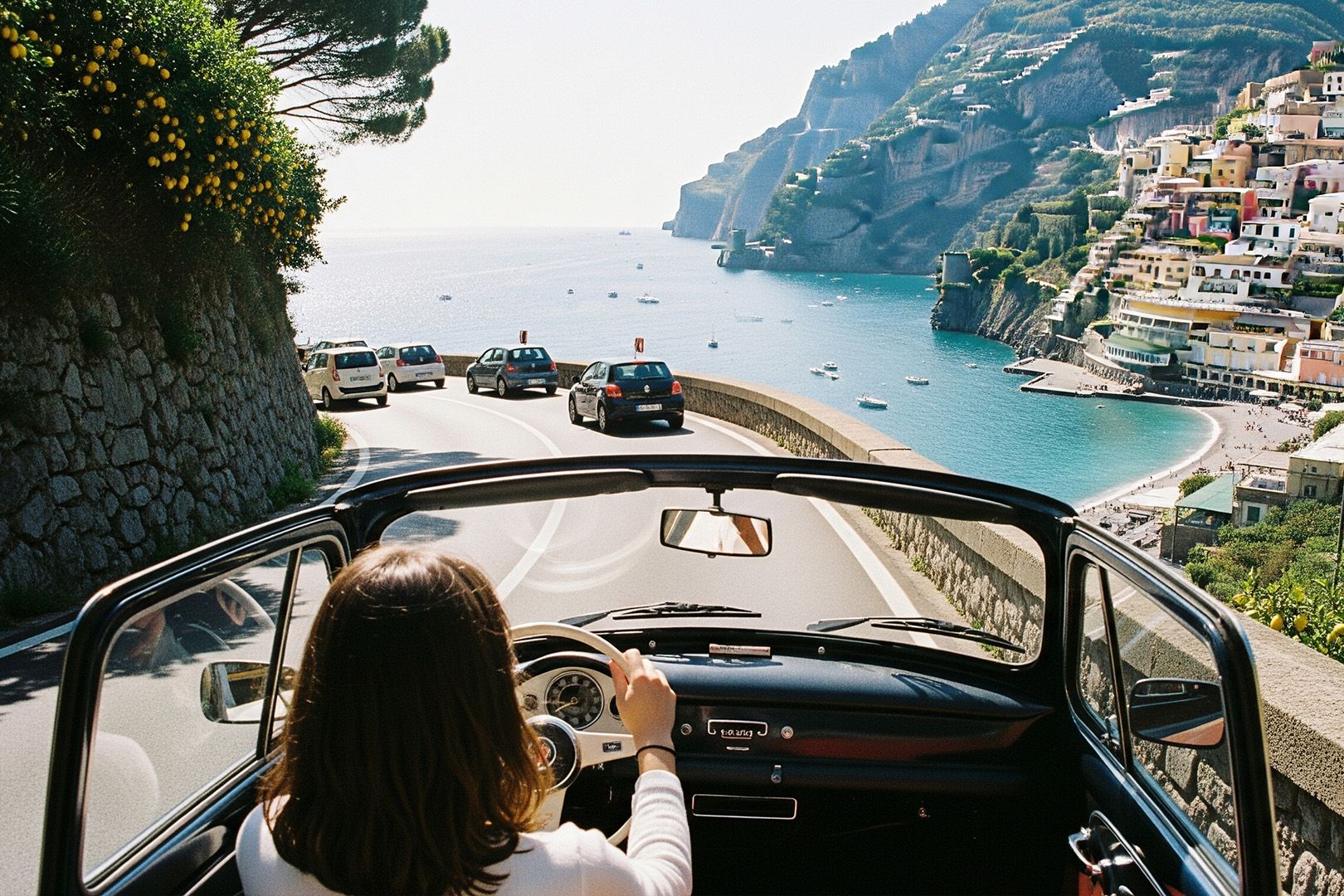On car vacation to Italy: here’s what you really need to watch out for
Traffic rules
At first glance, Italian traffic rules are quite similar to Dutch ones. You drive on the right there, the speed limits are fairly clear, and there too: no talking on the phone behind the wheel. But note the following differences:
- Speed: on freeways in Italy you are usually allowed 130 km/h unless otherwise indicated. In rain or poor visibility, this drops to 110 km/h.
- Speed cameras: Italy is known for having speed cameras that are barely visible. Note that nowadays fines are often sent neatly to the Netherlands.
- Safety vest and warning triangle: must be carried in the car. If you do not have them with you during an inspection, you risk a fine.
- Children: children under 5 feet tall must be in an approved child seat.
Toll roads in Italy
Who says Italy, says Autostrade. The country has an extensive network of toll roads(strade a pedaggio), which are well maintained, but expensive. You pay tolls per route, which can add up considerably if you drive all the way south.
Here’s how it works:
- When entering a toll road, you take a ticket.
- When exiting the toll road, you insert that same ticket into the pay machine.
- You pay by cash, debit or credit card.
- Sometimes there are separate lanes for people with Telepass: an electronic toll badge for locals. So those lanes should be avoided if you are driving without a badge.
Want an indication of the cost? A trip from Milan to Rome costs about 40 euros in tolls with an average passenger car. Don’t forget your fuel costs and any vignettes in other countries.
Environmental stickers and environmental zones
More and more Italian cities have so-called ZTL zones(Zona a Traffico Limitato). These are car-free areas where you are not allowed to drive, usually in historic city centers such as Florence, Rome, Bologna or Pisa.
What you need to know about ZTL zones:
- They are usually only accessible to residents, cabs and emergency services.
- The zones are strictly controlled with cameras. You are immediately flashed if you drive into them unlawfully.
- Fines range from 70 to over 100 euros and are also neatly sent to the Netherlands – including administrative fees.
You don’t need an environmental sticker like in Germany or France, but you do need to watch out if you enter a ZTL. Tip: set your navigation to ‘avoid ZTL’ or use an app like Waze that recognizes these zones.
Parking in Italy
Parking rules in Italy can be confusing, but it helps if you know what the colored lines on the street mean:
- White: free parking (rare, but it exists).
- Blue: paid parking.
- Yellow: reserved for permit holders or specific vehicles (i.e. not parking).
Also watch for signs with restrictions on market days or cleanup: unsuspecting parking on a Tuesday night could mean your car is on the tow truck or behind a market stall Wednesday morning.
Required in the car
In addition to the previously mentioned safety vest and warning triangle, you are also required to carry the following in Italy:
- A valid driver’s license (European driver’s license is sufficient).
- The car’s registration certificate.
- A green card (not required, but useful in case of damage).
Driving with flip-flops or bare feet is not officially prohibited, but is not recommended. However, should you be involved in an accident, this may factor into the assessment of your liability.
See also: On vacation in Italy? Then you can’t miss the Alfa Romeo Museum
See also: Lancia Ypsilon HF – the hottest EV right now?! – AutoRAI TV

